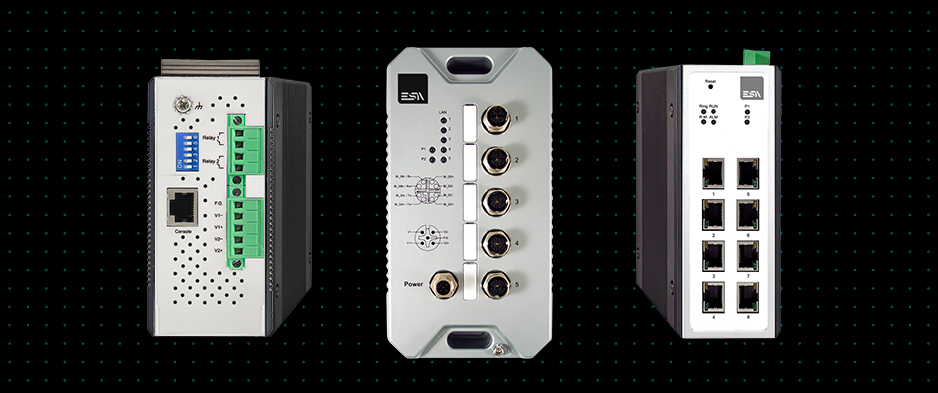HIDRA switches with industrial case complete ESA’s range of Industry 4.0 solutions. Available in unmanaged, managed at Layer 2 and Layer 3 variants, these devices offer protocol integration for redundancy, security features and simplified programming.
Here are the main features.
Advantages of the HIDRA industrial switch
IIoT solution
HIDRA industrial switches are designed according to the principles of the Internet of Things to support smart manufacturing at all levels. This translates into advantages such as the ability to automatically send alarms in the event of network connection problems to prevent breakdowns and downtime.
IT security
Cybersecurity is essential in an increasingly digital industry, where production data and sensitive information are constantly exchanged. ESA has introduced features such as choosing users and PCs that can access the network, and the creation of virtual LANs VLANs to segment the network into subgroups without modifying the cabling.
Communication stability
HIDRA industrial switches stand out for the reliability of the connection, thanks to the redundancy for ring network topologies. In this way, even in the event of a failure, the availability of the network is guaranteed without interruption in the plant’s activity.
Industrial robustness
Adaptability to any industrial environment is another of the benefits of HIDRA. With IP67 waterproof protection, extended temperature range between -40 ° C and + 70 ° C, and a robust industrial-grade design, this range works perfectly even in critical environments and abroad.
HIDRA technical features
- Control of exchange times by defining queues with different priorities for accessing the network.
- 10/100/1000 RJ45 ports and 100/1000 BASE-X SFP ports
- Power over Ethernet ports with 24V DC power supply (ESNET08UG8P00V). You don’t need a specific power supply.
- Circuit for double redundant power supply
- Reverse polarity protection
- Predisposition for fixing to DIN guide, metal case
- Extended temperature ranges from -40 ° C to 70 ° C
- IEEE 802.3 / 802.3u / 802.3x
- Software management at Layer2 and Layer3 level
- Redundancy using the ITU-T G.8032 ERPS ring, RSTP, STP, MRP (client) compatible ring protocols
- CE, UL, NEMA, Atex zone-2, IP67 certifications
- Management of segmentation via virtual LAN
- Modbus, Profinet and Ethernet Ip support
- Compliant with IEC62443 standard

